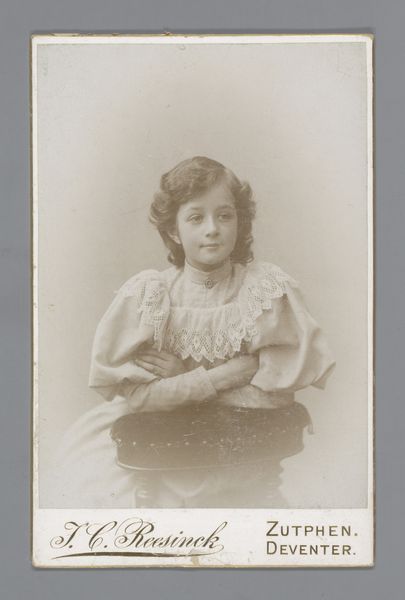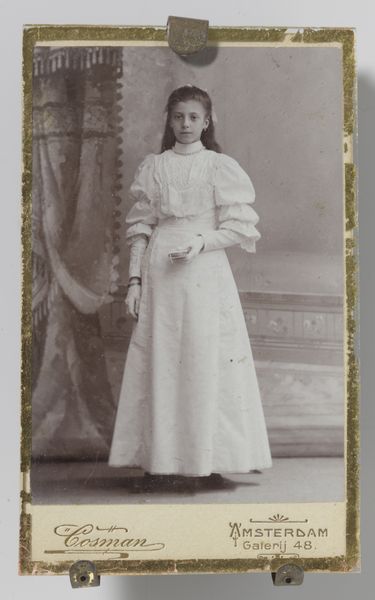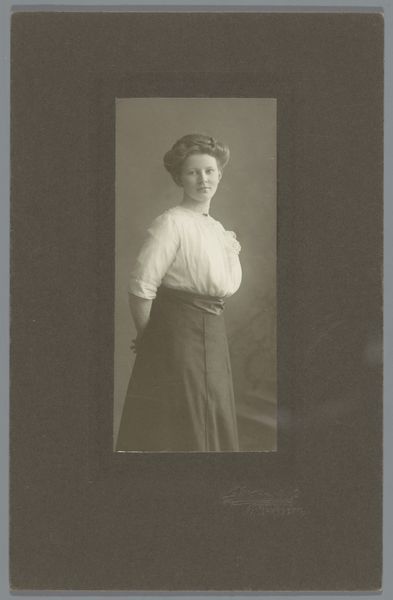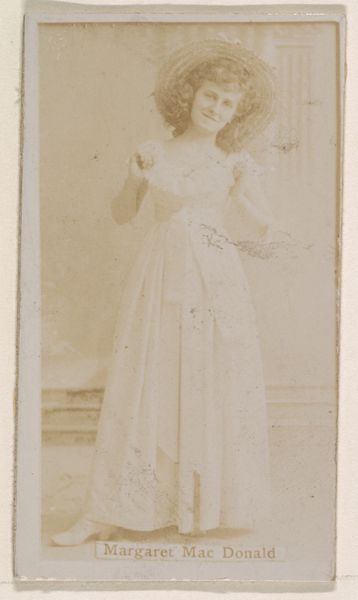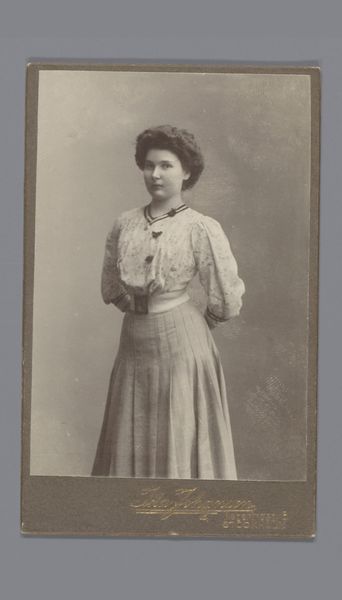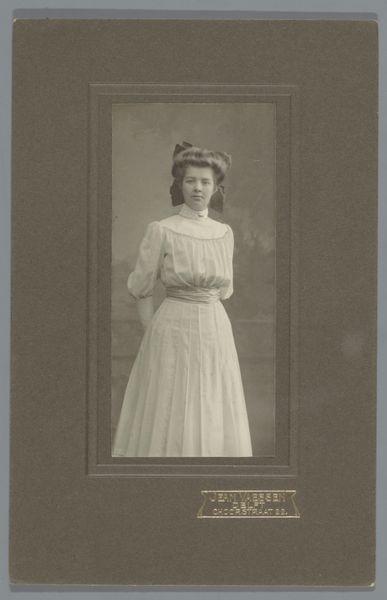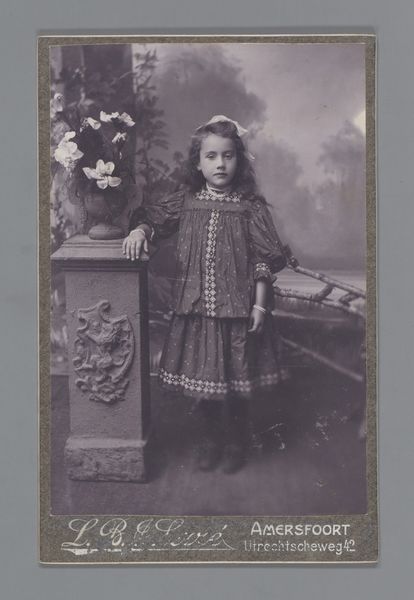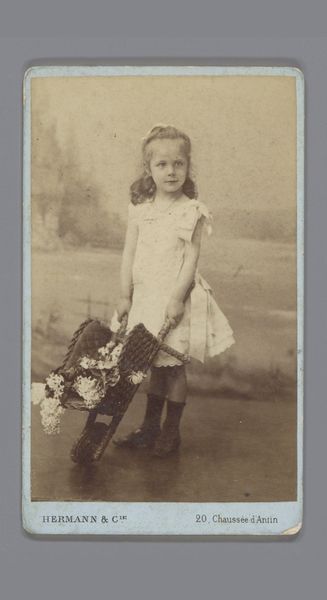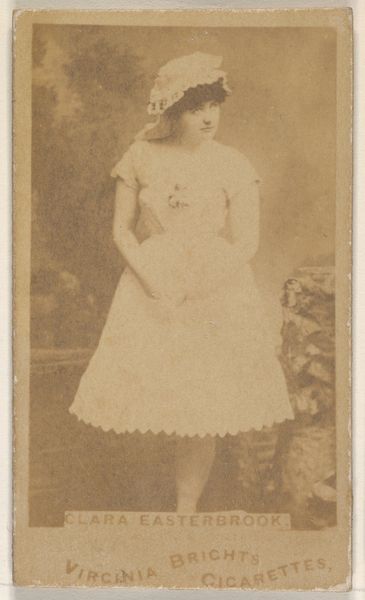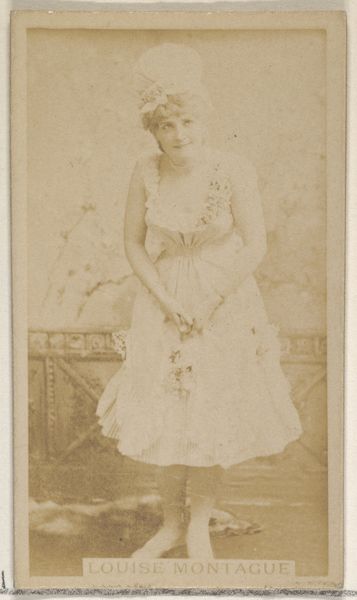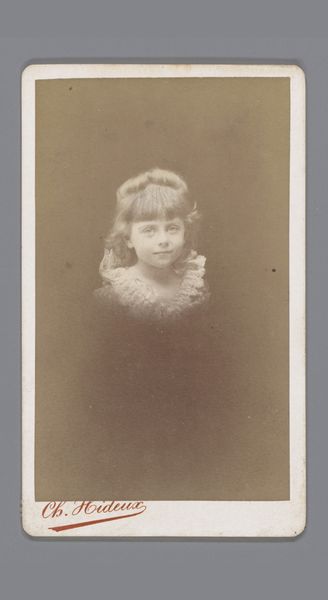
paper, photography, pencil, gelatin-silver-print
#
portrait
#
vintage
#
paper
#
photography
#
historical fashion
#
pencil
#
gelatin-silver-print
#
paper medium
Dimensions: height 119 mm, width 52 mm
Copyright: Rijks Museum: Open Domain
Editor: This is a gelatin-silver print from between 1900 and 1914, titled "Portret van een onbekend meisje met bloemenkrans," by W. Hammesfahr. The girl, adorned with a flower crown, looks directly at the viewer, evoking a sense of fragile innocence. What do you see in this piece? Curator: Beyond the apparent innocence, I see a carefully constructed image reflecting the societal expectations placed upon young girls at the turn of the century. The flower crown, while seemingly idyllic, can be interpreted as a symbol of purity and impending womanhood, ideas deeply intertwined with patriarchal control. The act of photographing itself reinforces this—capturing and framing female identity. Does the direct gaze challenge or succumb to those expectations? Editor: That’s a really interesting perspective. I hadn't considered the photograph as an act of control. Do you think the lack of a known identity—the “unknown girl”—adds to this interpretation? Curator: Absolutely. The anonymity amplifies the symbol. She becomes an archetype, representing countless young women navigating a restrictive social landscape. We can think about how photography, especially portraiture, was used both to document and to enforce social norms around gender, class, and race. Consider the artist and their place in documenting turn-of-the-century traditions. The image also lacks a strong setting or a personality, so how much do you see the picture documenting, and how much conforming? Editor: It's unsettling to realize how much is packed into a seemingly simple photograph. I'm walking away thinking about the power dynamics at play in historical portraiture. Curator: Precisely! By interrogating these historical images through a contemporary lens, we can uncover the complex social and political narratives they embody. Looking back is critical to understanding the world that made us.
Comments
No comments
Be the first to comment and join the conversation on the ultimate creative platform.
